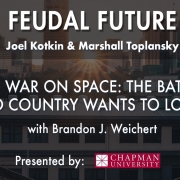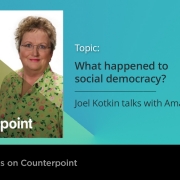Canada Starting to Look Neo-feudal as Rich-Poor Gulf Widens
By: Frank Stronach
In: National Post
The rich get richer and the poor get poorer goes the old saying. But is it true? It certainly seems to be the case in Canada.
A new report published by Statistics Canada last week showed that the wealth gap in our country continues to widen. According to the report, the richest 20 per cent of Canadians accounted for nearly 70 per cent of the country’s total wealth in the third quarter of 2023, while the bottom 40 per cent of Canadians represented a meagre three per cent of Canada’s wealth in that time. The wealth gap between these two groups rose by 0.2 per cent from 2022 to 2023.
The highest-earning Canadians experienced a gain in net saving from 2022 to 2023, while low-income households experienced a decrease in that metric as they struggled to pay rising bills, interest on loans and mortgages and food and gas costs. In other words, while the rich got richer, the poor got poorer.
A week before the StatsCan news regarding growing income inequality, Oxfam Canada reported that the richest 0.02 per cent of Canadians now possess more wealth than the bottom 80 per cent.
And while wage growth has stalled for most Canadians, those at the top of the corporate ladder continue to receive record-breaking compensation, according to the Canadian Centre for Policy Alternatives.
Joel Kotkin, an urban studies professor from California, wrote about the growing divide in wealth in his 2020 book titled “The Coming of Neo-Feudalism: A Warning to the Global Middle Class.” Kotkin cites California as a striking example of a modern neo-feudal state.
According to him, California is characterized by an ultra-rich upper class composed of tech oligarchs — which he describes as a new aristocracy — and below them, at the bottom of society, are the new “serfs,” a large and growing segment of the population that is property-less and poor.
California, says Kotkin, “has become the progenitor of a new form of feudalism characterized by gross inequality and increasingly rigid class lines,” with a degree of income inequality that is worse than in Mexico. One-third of all welfare recipients in the entire United States live in California. The state’s middle class, meanwhile, is evaporating as people and companies flee high taxes, worsening crime and suffocating regulations.
Canada is looking more and more like a neo-feudal state, with a small number of very wealthy individuals and an increasingly expanding lower class of people whose incomes and wealth are shrinking year by year. In between these two groups is the bureaucratic class, which serves the very rich and powerful and keeps the rest of the people under their thumb with countless rules and regulations that restrict nearly every aspect of their lives.
So what can we do to bridge the growing divide between the wealthy and the workers in Canada?
Some Canadians support the introduction of a wealth tax as the best way to address income inequality. Others argue that we need to boost corporate tax rates.
But I believe that we need to move into a new phase of capitalism where workers become partners in profitability and share in the financial outcome of the businesses they work for.
Read the rest at National Post

 licensed from Shutterstock
licensed from Shutterstock DonkeyHotey, via Flickr, under CC 2.0 License
DonkeyHotey, via Flickr, under CC 2.0 License

 Gage Skidmore, CC 2.0 License
Gage Skidmore, CC 2.0 License


 DonkeyHotey, via Flickr, under CC 2.0 License
DonkeyHotey, via Flickr, under CC 2.0 License